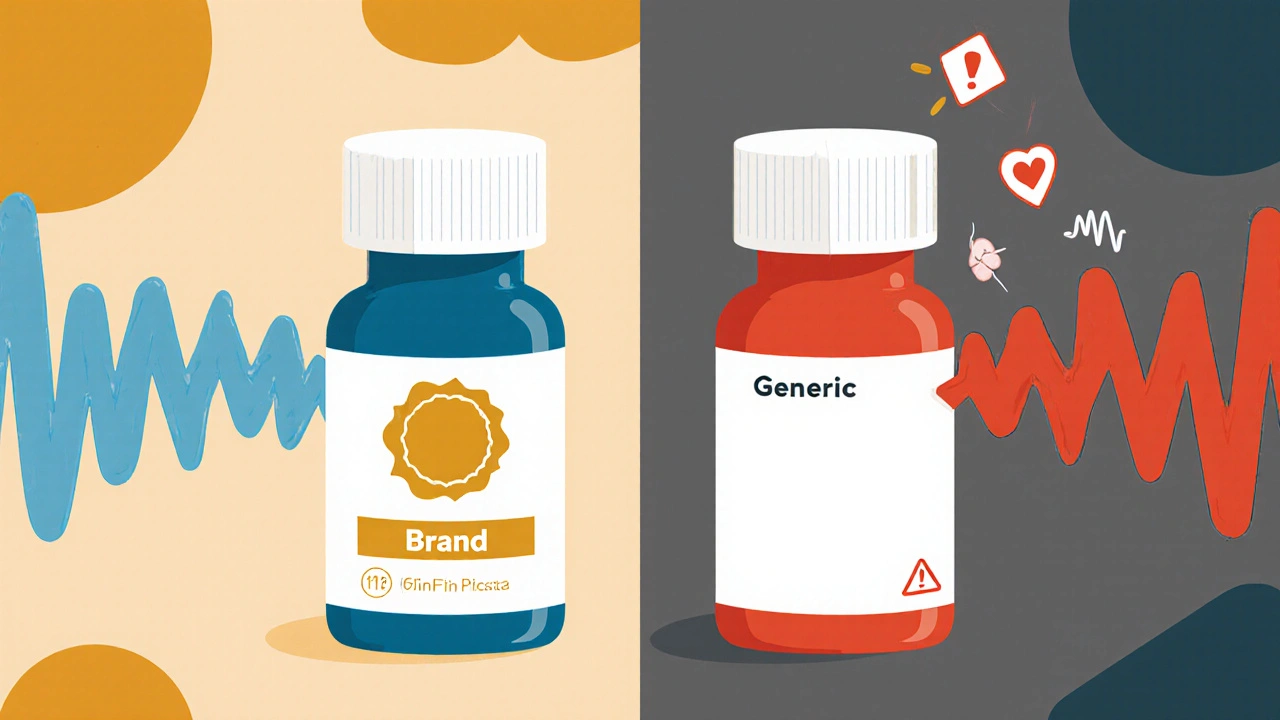Drug Equivalence: What It Means and Why It Matters for Your Medications
When you hear drug equivalence, the scientific standard that ensures a generic medication performs the same way as its brand-name counterpart. Also known as bioequivalence, it means your body absorbs and uses the drug at the same rate and amount—no matter if it’s labeled as the original or a copy. This isn’t just a regulatory checkbox. It’s the reason millions of people switch to cheaper generics every day without losing control of their blood pressure, asthma, or epilepsy.
But not all drugs play nice when swapped. Generic substitution, the practice of replacing a brand-name drug with a generic version at the pharmacy. Also known as therapeutic substitution, it works great for most medications—but falls apart with drugs that have a narrow therapeutic index, where tiny differences in blood levels can cause serious side effects or treatment failure. Think seizure meds like phenytoin or heart drugs like warfarin. A 10% variation in absorption might mean the difference between a seizure and a safe day. That’s why some doctors and patients stick with the brand, even when it costs more.
It’s not just about chemistry. The ANDA process, the legal pathway the FDA uses to approve generic drugs in the U.S.. Also known as Abbreviated New Drug Application, it requires manufacturers to prove their version matches the original in strength, purity, and how fast it dissolves. But even with strict rules, real-world results vary. People report different side effects, different effectiveness, even different pill shapes causing confusion. That’s why patient stories on social media—like those shared on TikTok or Facebook—have become a real-time feedback loop for drug equivalence issues.
And then there’s the gap between pills and biologics. Biologic drugs, complex medicines made from living cells, like those used for rheumatoid arthritis or cancer. Also known as biopharmaceuticals, they can’t be copied exactly like aspirin. That’s why we get biosimilars—not generics. They’re close, but not identical. If you’re on one, switching isn’t a simple swap. You need to talk to your doctor.
So when does drug equivalence actually work? For most common meds—like statins, antihistamines, or blood pressure pills—it’s reliable, safe, and saves you hundreds a year. But for epilepsy, heart conditions, mental health meds, or anything with a narrow window for error, don’t assume. Ask your pharmacist: Is this really the same? And if you’ve noticed a change after switching, speak up. Your body knows.
Below, you’ll find real patient experiences, side-by-side comparisons, and deep dives into the drugs where equivalence matters most—from azilsartan to ezetimibe, from antiseizure meds to nasal sprays. No fluff. Just what you need to know before your next refill.

